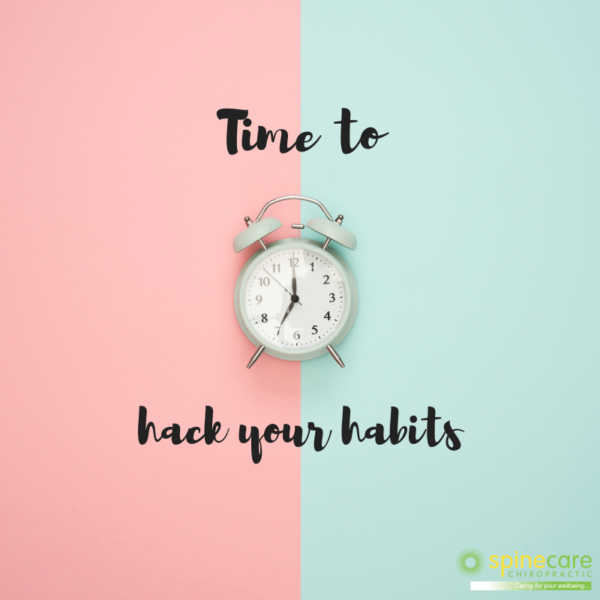Do you rule your habits or do they rule you? Achieve your goals this 2019 by becoming a Habit Master.

Everyone has one. Sometimes two or three. Those friends who seem to be able to accomplish anything with ease, quietly kicking goals while the rest of us are still trying to kick our coffee habit. From the outside, these committed, unflappable folk – up and running at 5:30am and home before our head has left the pillow – appear to have superpowers. Or at least, double strength willpower.
What’s their secret?
If you said ‘willpower’, you might be surprised to hear that, actually, ‘habits’ have a lot more to do with it. And the good news is, habits are something anyone can design and develop, making them work for you (and becoming one of those ‘it’s-only-8am-but-I’ve-already-exercised-done-the-washing-and-meal-prepped’ kind of people).
Habits vs. willpower
Habits make us who we are, repeating themselves ad infinitum to shape our bodies, minds and beliefs. They’re powerful, automatic and can work for or against us.
Rather than relying on willpower alone – subject to the vagaries of emotions and environment – many highly effective people design habits that carry them towards their goals, ‘setting’ them to run automatically and waving goodbye to tiring, moment-to-moment decision making.
They make a habit of healthy or productive actions, just like brushing your teeth or walking the dog.
Sounds smart, doesn’t it? But before you start brainstorming all the virtuous habits you’d like to implement, it helps to understand what’s driving them in the first place.
The anatomy of a habit
Habits are made up of a cue, a craving, a response and a reward.
In practice, this might look like:
Cue = You wake up.
Craving = Feeling fatigued and groggy, you crave something stimulating. Like coffee.
Response = You head to the kitchen and switch on the coffee machine.
Reward = The aroma of freshly ground beans fills the room, you sip your bitter black brew, and feel energised, awake and human.
The addictive effects of caffeine coupled with a regular morning routine make it easy to see how this habit takes hold, but the same feedback loop underpins any habit – beneficial or not. Here are some more examples.
Cue = It’s 3.30pm and you’re bored at work.
Craving = A sugary treat to give you energy (and an excuse to leave your desk).
Response = Walk to vending machine and choose a chocolate bar.
Reward = A blood-sugar rush, the sweet taste of choccie, and a reprieve from a tedious afternoon at the computer.
or,
Cue = You arrive home after a loooong day, and slump on the couch.
Craving = A distraction from the need to make dinner (and attend to other ‘adult’ obligations).
Response = You pull out your phone and scroll through social media.
Reward = Temporary relief and relaxation as you’re transported into a world of other people’s highlights, babies, holidays and aspirations.
When you put habits under the microscope, it becomes clear why they’re around. Most provide temporary relief from discomfort, stress or inadequacy, helping us to feel better in their own special way. Kind, considerate habits! Unfortunately, they’re not always best for us in the long run.
The trick to creating positive habits is to know your triggers, and replace your automatic ‘response’ to a craving with something altogether more wholesome.
Let’s get designing!
Rather than seeing ‘breaking bad habits’ as a painful, laborious task, it helps to infuse the process with a little fun. Think of yourself as a designer or a strategist, setting a course towards your goals using small-yet-significant tweaks to your routine.
Start off by identifying habits that are holding you back – like snacking after dinner, snoozing your alarm, buying a muffin en route to work or staying up late on Facebook.
Once you’ve worked out what they are, use your knowledge of ‘habit anatomy’ to dissect and discover what’s driving these actions, giving you clues as to how to change them.
Perhaps your daily donut habit is actually triggered by low blood sugar, and by eating more protein for breakfast and taking a different route to work, you can nip it in the bud.
If your social media scrolling happens before bed (disrupting your sleep and feeding your FOMO), tucking yourself in with an enthralling work of fiction may represent a more enjoyable – and psychologically healthier bedtime habit.
Grab a good habit buddy
Struggling to interrupt your cravings? Getting a friend on board helps. Exercising with a buddy, enjoying healthy lunches with a likeminded colleague, making a pact with a spouse, all offer accountability which can help ease the transition from destructive to constructive habits.
Just keep swimming
Like anything involving change or effort, the first part is the hardest. Expect your brain to interject with excuses or pleas for treats during the first few days of your new habit – and it’s exceptionally persuasive when it wants to be.
Rather than give in, focus on how good you’ll feel when you no longer need that morning pick-me-up, when you’re running 5k without stopping, when your habits become positive, productive and rewarding – in and of themselves.

